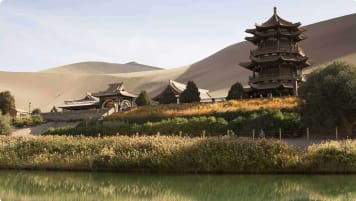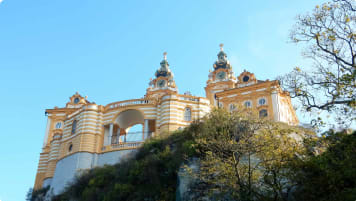Highlights of Bhutan: Tiger's Nest Monastery
The Tiger's Nest monastery, known locally as Paro Taktsang, has earned a reputation as one of the most remarkable tourist spots in central Asia. It has become the most iconic cultural landmark in Bhutan, and a trip to the country is incomplete without a visit.
1 Jan 20 · 4 mins read
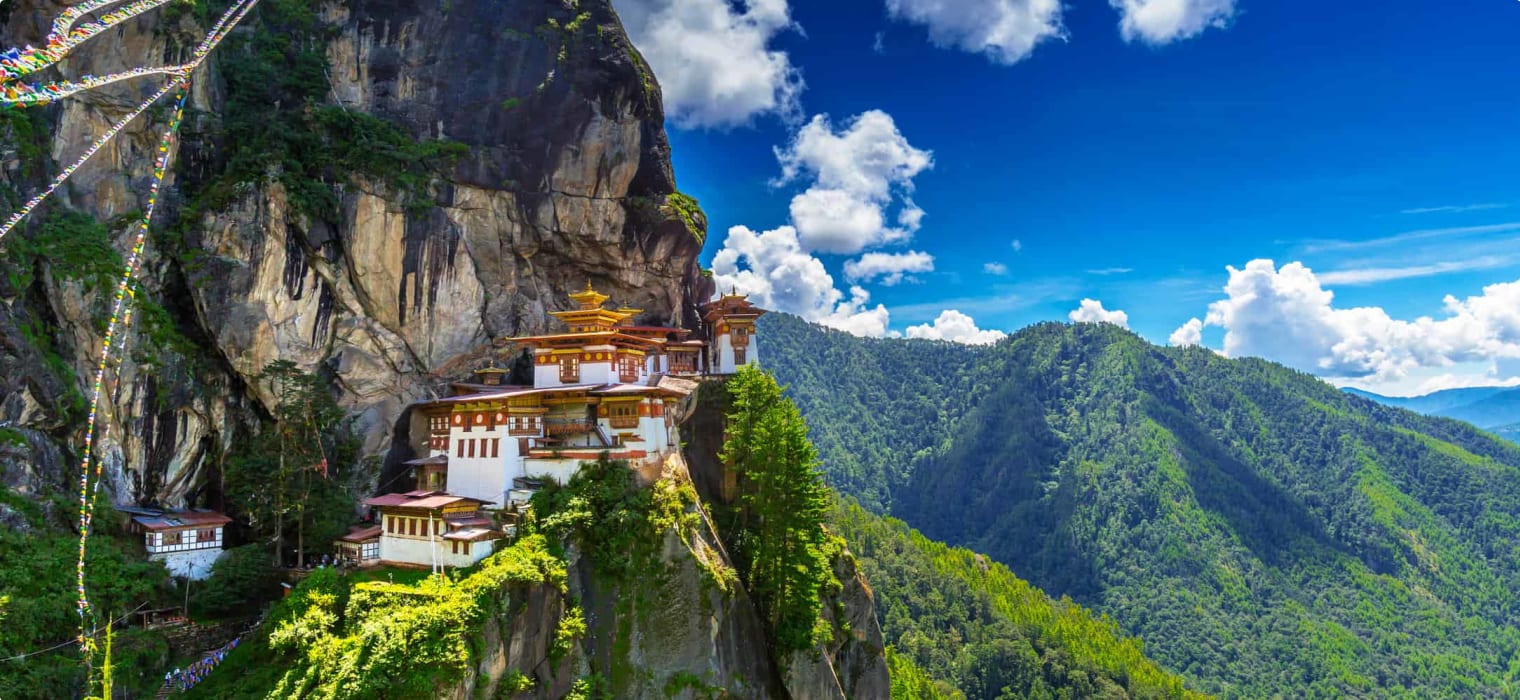
Tiger’s Nest Monastery
The Tiger’s Nest monastery, known locally as Paro Taktsang, has earned a reputation as one of the most remarkable tourist spots in central Asia. It has become the most iconic cultural landmark in Bhutan, and a trip to the country is incomplete without a visit.
Paro Taktsang is a Buddhist monastery perched above the Paro Valley. The monastery was built at the end of the 17th century, in the traditional architectural style of the time. The white walls of Paro Taktsang stand out brilliantly against the background of harsh rock and dark jungle surrounding it. Wide-brimmed roofs, coloured in regal reds and gold, overhang the walls below. In all, the complex totals four main temples, with numerous smaller buildings for living and eating.
Where Can You Find It?
Though the building is architecturally impressive, the tiger’s nest monastery is made remarkable by its location. The monastery complex is situated at the top of a mountainous outcrop, its structures seemingly sprouting out from the angular rock face beneath it. The white walls cling on to the edge of a cliff face, the other side of which lies a steep drop of almost a kilometre to the Paro Valley floor below. In all, Paro Taktsang sits at more than three kilometres above sea level. Between each temple, stone steps have been laboriously carved into the very rock, adding in to the sensation that the monastery has grown from the very mountain itself.

How on Earth Do I Get Up There?
What makes the Tiger’s nest monastery so beautiful – its steep isolation and windswept views – also makes it hard to access. No cars or coaches are able to reach anywhere near the valley, and so hiking is the number one way to get to the top and soak in the views. In total, the round trip will take between four and five hours. Before you make it to the routes up the cliff, travellers must start with a trek through the thick forests to reach the base of the cliff. Three, winding mountainous paths then take you up to the monastery. At the start of these paths, from the very base of the cliff, it seems as though the monastery is completely inaccessible, guarded by an impregnable ring of cliff faces and granite slabs. H
However, paths seem to continue out of nowhere, guiding visitors in winding loops, past steep ravines and through the base of a cascading waterfall, up to the final complex. The paths are all uphill, but not overly steep. At this level of altitude, it is recommended that you take the path slowly, which is no real burden, given the stunning views that you are afforded across the canyon and gorge. There is a stop to eat and drink halfway up the route, and the paths are decorated with prayer wheels, religious decorations and bright symbols. There is one alternative, however, for those less able to walk. For a fixed price, you can ride most of the path on a horse, and will only have to walk short distances.

Why is the Tiger’s Nest so Culturally Important?
To Bhutanese people and Buddhists, the temple holds a far greater importance than simply its natural beauty and isolation. Tiger’s Nest Monastery is of the upmost cultural and religious importance within Bhutanese culture. Guru Rinpoche, the “Second Buddha” of Bhutan, is believed to have meditated for four months in a nearby cave, having flow from Tibet on the back of a tigress. “The Second Buddha” of Bhutan, then banished the local demons, and began to convert the people of Bhutan to Buddhism. Guru Rinpoche is therefore seen as the figure that brought Buddhism into central Asia in the 7th century, which is why this spot is so revered, and people have gone to such lengths to construct this remarkable place of worship.
Despite its remote location, Tiger’s nest monastery is decorated with luxurious symbols of Buddhism and Bhutanese culture. Perhaps the most impressive is the statue of a tiger in the hall of the Thousand Buddhas, itself carved out of the surrounding rock. The tiger is a reference to the ancient past of Paro Takstang. The name ‘Takstang’ translates as ‘tigress lair’, so called because it is believed that Guru Rinpoche flew to this mountainous outcrop on the back of a tigress from Tibet.
The monastery is active today, and many monks will make the journey to meditate in the cave networks. If you get the chance, it is always worth having a conversation with one. Monks bring the human side to a spiritual and physical story, and are always worth your time!
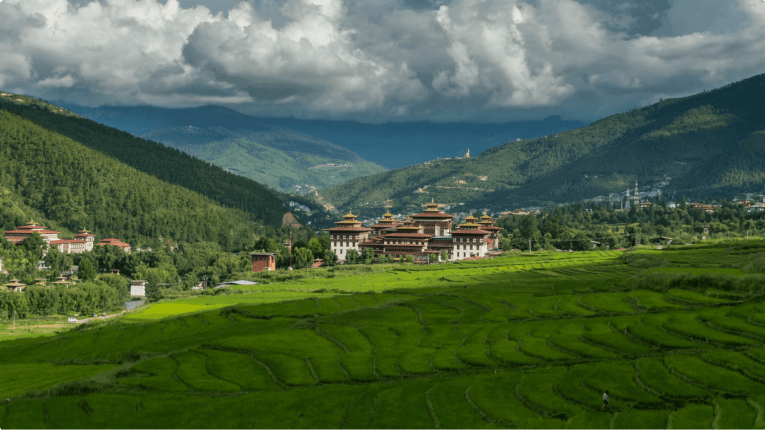
Articles about Bhutan published by Odyssey Traveller:
- Bhutan: A journey into the Hidden Kingdom.
- Festivals of Bhutan.
- Bhutan’s Nalakhar Tschechu Festival
- Temples of Bhutan
- The National Textile Museum of Bhutan
External articles to assist you on your visit to Bhutan:
- Buddhism in Bhutan
- Interview: Why I swapped investment banking for Buddhism in Bhutan
- What It’s Like To Visit Taktsang Monastery (Tiger’s Nest) In Bhutan
- How to Visit the Tiger’s Monastery in Bhutan
- Visit the world’s only carbon-neutral country.
- Traveling in Bhutan: What you need to know before you go.
- 23 facts about Asia’s most mysterious country.
Related Tours
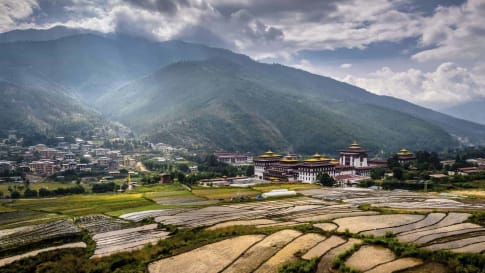
17 days
Sep, AprBhutan | Small Group Cultural Tour
Visiting Bhutan
An unhurried ocean of calm in a crowded continent, Bhutan is scenically magnificent. Join our small group escorted tour and walk up the mountain to the famous Tiger's Nest monastery. The Bhutanese will welcome you to share their distinctive culture, unpolluted environment, and colourful festivals.We explore centuries of Buddhist tradition inherited from Tibet that have shaped this land with art, dance, music, and even medicine shaped by religion.
From A$13,695 AUD
View Tour
14 days
Nov, AprTour of Darjeeling, Sikkim, and Bhutan
Visiting Bhutan, India
Join Odyssey Traveller on this small group tour in the Indian subcontinent, taking us from the verdant tea gardens of Darjeeling nestled in the Himalayan mountain range, to the hilltop monasteries of the former independent kingdom of Sikkim, and finally to the pristine and beautifully isolated mountain landscape of Bhutan.
From A$12,325 AUD
View Tour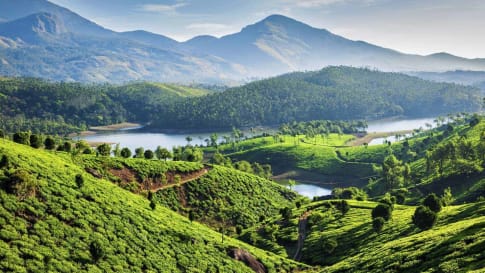
22 days
Nov, MarCultural and History Tour of India | Small Group Tour
Visiting India
Small group tour for mature and senior couples and solo travellers to India. Visiting Delhi and the red fort, Jaipur, Agra and so much more over 22 days explore the world of the Mughal.
From A$12,300 AUD
View Tour
11 days
Nov, Mar, OctIndia Short Tour | Small group tour for seniors
Visiting India
A short small group tour for Mature and seniors couples and solo travellers of India and its icons. Bounded by the majestic Himalayan ranges in the north and edged by an endless stretch of golden beaches. India is a vivid kaleidoscope of landscapes, magnificent historical sites, such as the Taj or red fort royal cities, such Dehli, Jaipur , Agra and Madras colourful people, and rich culture.
From A$9,250 AUD
View Tour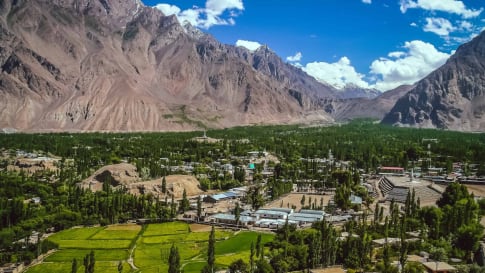
22 days
Mar, Sep, AugTour of Pakistan including Skardu Valley
Visiting Pakistan
This 22-day tour begins much like our 16-day tour of Pakistan, travelling from Karachi to Islamabad with a six-day extension that allows us to further explore the northern parts of the country.
From A$12,995 AUD
View Tour